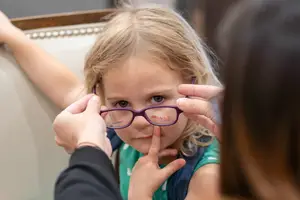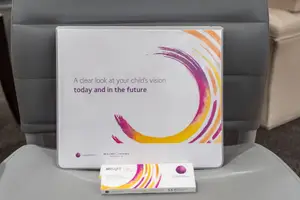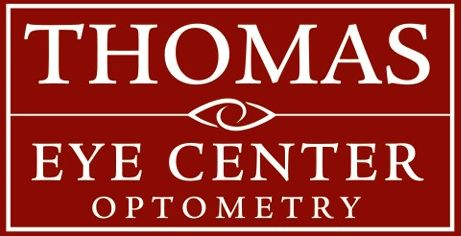Pediatric Eye Exams in Athens, GA
Gentle, age-appropriate vision care to help your child see clearly, learn confidently, and grow with healthy vision.

Why Children’s Eye Care Matters
Clear vision plays a big role in how kids learn, focus, and interact with the world. Undiagnosed vision problems can affect reading, classroom performance, hand-eye coordination, and even behavior. That’s why early, consistent eye exams are so important, not just for vision correction, but for lifelong eye health.
We welcome children of all ages, from toddlers to teens. Our approach to pediatric eye care in Athens is relaxed and reassuring, with plenty of time to explain what we’re doing and help each child feel at ease.
What We Check During a Pediatric Eye Exam
Each exam is tailored to the child’s age and developmental stage, but may include:
Visual acuity (distance and near)
Eye alignment and muscle function
Depth perception and focusing skills
Eye health evaluation
Prescription screening for glasses or contact lenses
We also take time to discuss any visual habits, symptoms, or concerns you’ve noticed at home or school, because parents know their child best.

Vision Needs Change as Your Kids Grow
A child’s eyes change rapidly, especially between the ages of 6 and 18. That’s why we recommend regular exams every one to two years, even if no problems are obvious.
Our team adjusts testing methods and communication style based on your child’s age, from playful, low-pressure evaluations for toddlers to detailed screenings for older kids and teens.
Support School Success & Visual Development
Vision isn’t just about seeing the board, it’s about tracking words across a page, copying from the screen, and staying focused in class.
We help identify subtle visual issues that could be affecting your child’s learning or behavior, even if they haven’t complained about their sight.
If needed, we’ll explain eyeglasses options, provide recommendations for screen use, or suggest strategies to reduce digital eye strain.


Myopia Management & Contact Lens Options
For children diagnosed with progressive nearsightedness (myopia), we offer treatment options like MiSight® daily contact lenses and low-dose atropine therapy, designed to slow the rate of progression and protect long-term eye health.
Our optometrists also fit contact lenses for active kids and teens, including those who need vision correction for sports, performance, or self-confidence.
Schedule a Pediatric Eye Exam at Thomas Eye Center
If your child is due for a check-up, or if you’ve noticed squinting, frequent headaches, reading struggles, or other changes, we’re here to help. Our team is ready to provide comprehensive eye exams in Athens, GA, and gentle care your family deserves.

